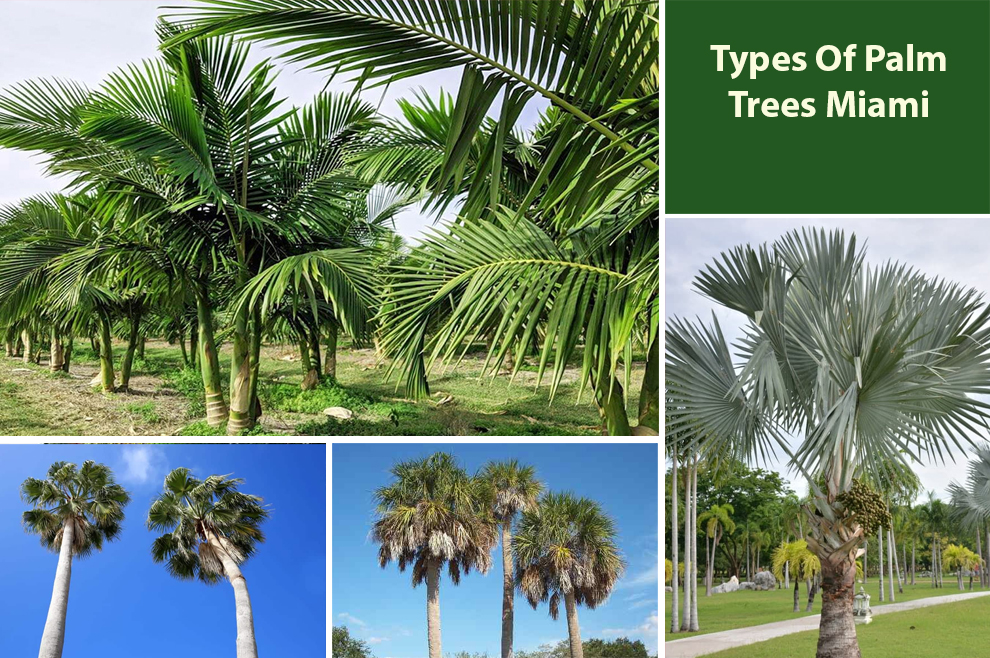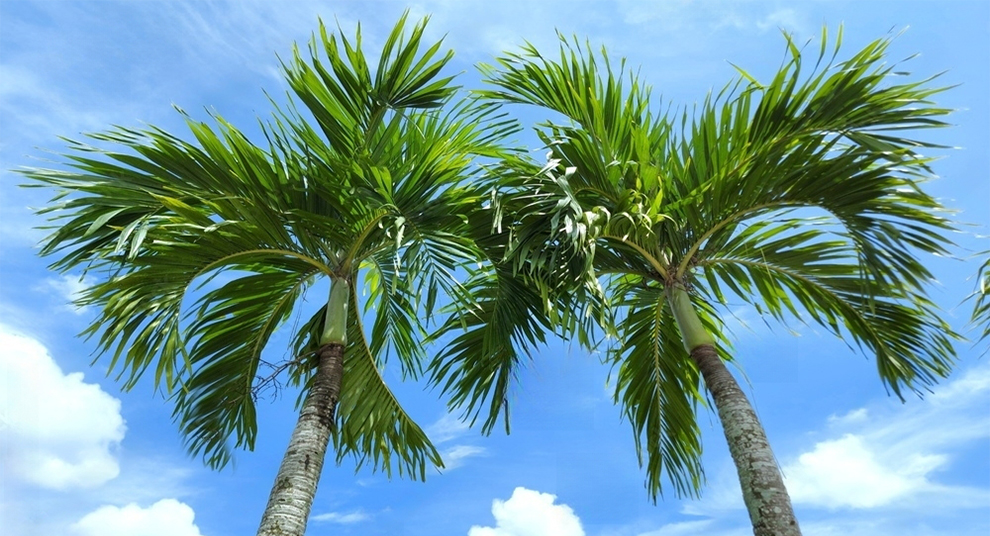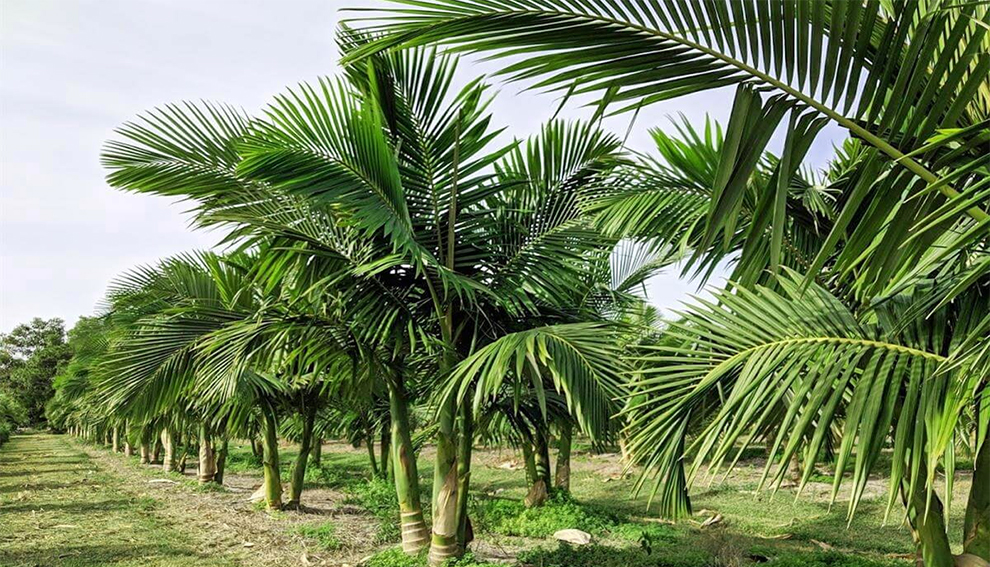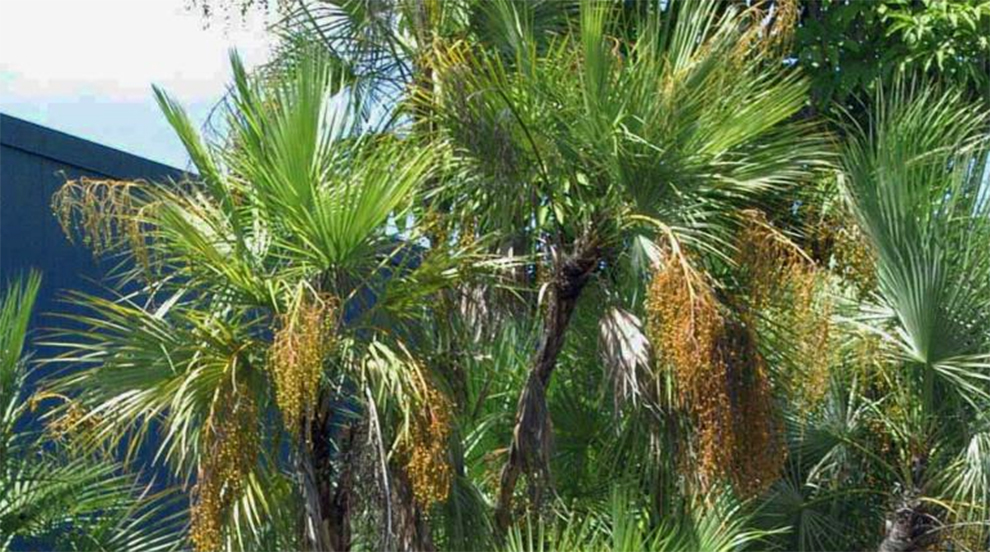Different Types of Miami Tree Species
Miami is home to many palm tree varieties. These include Foxtail palm, Areca palm, Coconut palm, Bismarck palm etc. There are many more, read below to know more!

Miami, a vibrant coastal city known for its sun-kissed beaches and lush landscapes, boasts a remarkable diversity of palm trees that add a touch of exotic beauty to its tropical charm.
From the iconic Coconut Palms lining the coastline to the majestic Royal Palms gracing the streets, Miami’s botanical wonders never fail to captivate locals and visitors alike.
Popular Miami palm tree species include Washington Palm (Washingtonia robusta), Date Palm (Phoenix dactylifera), and Foxtail Palm (Wodyetia bifurcata), among others.
The city’s subtropical climate provides an ideal environment for a wide array of palm trees to thrive, each showcasing unique characteristics and appeal.
The exact number of palm tree types can vary, but it is estimated that there are over 25 different species of palm trees commonly found in the Miami area.
Join us as we delve into the enchanting world of palm trees in Miami, discovering their fascinating traits and the rich green tapestry they weave across this sunlit paradise.
Types of Palm Trees Miami Is A House To
This list includes both native and introduced palm species commonly found in Miami’s tropical climate.
- Coconut Palm (Cocos nucifera)
- Royal Palm (Roystonea spp.)
- Foxtail Palm (Wodyetia bifurcata)
- Areca Palm (Dypsis lutescens)
- Pygmy Date Palm (Phoenix roebelenii)
- Bismarck Palm (Bismarckia nobilis)
- Christmas Palm (Adonidia merrillii)
- Alexander Palm (Ptychosperma elegans)
- Pindo Palm (Butia capitata)
- Chinese Fan Palm (Livistona chinensis)
- Everglades Palm (Acoelorrhaphe wrightii)
Do Palm Trees Thrive In Miami?
Yes, palm trees thrive in Miami, Florida. Miami’s tropical climate, characterized by warm temperatures and high humidity, provides an ideal environment for various palm species to grow and flourish.
The city’s location in South Florida, near the coast, allows for the successful cultivation of a wide range of tropical and subtropical palms.
Some of the reasons why palm trees thrive in Miami include:
1. Warm temperatures: Most palm trees prefer warm climates, and Miami’s average temperatures are well within the range that supports palm growth.
2. High humidity: Palms generally thrive in humid conditions, and Miami’s proximity to the ocean ensures a relatively high level of humidity throughout the year.
3. Abundant rainfall: Miami experiences a significant amount of rainfall, particularly during the wet season, which helps keep palm trees well-watered and hydrated.
4. Well-draining soil: Many palm species prefer well-draining soil, and Miami’s sandy soils are conducive to healthy root growth.
5. Suitable growing season: Miami’s long growing season allows palm trees to continuously grow and develop throughout much of the year.
Let’s Look At Different Miami Palm Tree Species
| Tree Variety | Scientific Name | Characteristics |
| Coconut Palm | Cocos nucifera | Tall, slender trunk; large fronds; produces coconuts |
| Royal Palm | Roystonea spp. | Stately appearance; smooth, gray trunk |
| Foxtail Palm | Wodyetia bifurcata | Bushy, plumage-like fronds; tropical appearance |
| Areca Palm | Dypsis lutescens | Feathery fronds; often used as an indoor plant |
| Pygmy Date Palm | Phoenix roebelenii | Small, graceful palm with arching fronds |
| Bismarck Palm | Bismarckia nobilis | Stunning blue-gray fan-shaped fronds |
| Christmas Palm | Adonidia merrillii | Festive red berries during the holiday season |
| Alexander Palm | Ptychosperma elegans | Slender palm with arching fronds |
| Pindo Palm | Butia capitata | Attractive silvery-blue fronds; produces sweet fruit |
| Chinese Fan Palm | Livistona chinensis | Large, fan-shaped leaves; adaptable to various conditions |
| Everglades Palm | Acoelorrhaphe wrightii | Silver-green fronds; native to South Florida |
You might also like to know about Palm Trees in – Arizona | Hawaii | Texas | South Carolina | California | Alabama | Australia | Brisbane | Florida | San Diego
1. Coconut Palm (Cocos nucifera)
The iconic coconut palm is frequently seen in Miami, with its tall, slender trunk and large fronds. It’s not only aesthetically pleasing but also produces coconuts.
2. Royal Palm (Roystonea spp.)
This majestic palm tree is native to South Florida and is a popular choice for landscaping due to its stately appearance and smooth, gray trunk.
3. Foxtail Palm (Wodyetia bifurcata)
The foxtail palm is recognizable by its bushy, plumage-like fronds that give it a distinct appearance. It’s a favorite for gardens and adds a tropical touch to the landscape.
4. Areca Palm (Dypsis lutescens)
Also known as the butterfly palm, it features feathery fronds and is often used as a decorative indoor plant as well as in outdoor landscapes.
5. Pygmy Date Palm (Phoenix roebelenii)
A smaller palm tree with graceful, arching fronds, the pygmy date palm is commonly used around patios, pools, and in small garden spaces.
6. Bismarck Palm (Bismarckia nobilis)
This palm is admired for its stunning blue-gray fan-shaped fronds and large size, making it a focal point in larger landscapes.
7. Christmas Palm (Adonidia merrillii)

With its red berries during the holiday season, the Christmas palm is a favorite for adding festive colors to Miami landscapes.
8. Alexander Palm (Ptychosperma elegans)

A relatively slender palm with elegant, arching fronds that are well-suited for tropical gardens and small spaces.
9. Pindo Palm (Butia capitata)
Also known as the jelly palm, this palm produces small, sweet fruit and has attractive silvery-blue fronds.
10. Chinese Fan Palm (Livistona chinensis)
Among the different types of palm trees in Miami, this palm features large, fan-shaped leaves and is known for its adaptability to various growing conditions.
11. Everglades palms (Acoelorrhaphe wrightii):

The Everglades palm, also known as the Paurotis palm or Silver saw palm, is native to South Florida, including the Everglades region.
Everglades palms are known for their attractive silver-green fronds and relatively small size compared to some other palm species. They are often used in landscaping projects in Miami due to their adaptability and ability to tolerate both wet and drier conditions.
These palms are well-suited for planting in various settings, such as residential yards, parks, and public spaces. Their presence adds to the overall tropical ambiance of Miami’s landscape and contributes to the city’s unique ecosystem.
